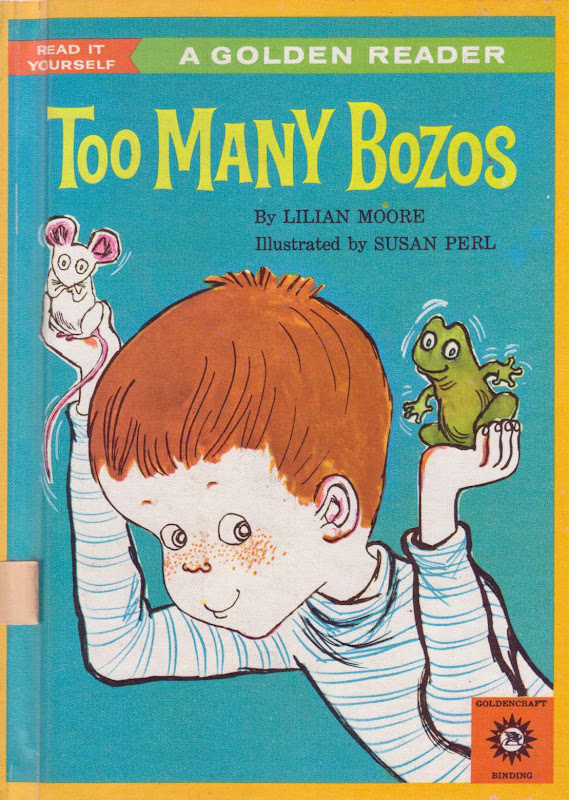 Too Many Bozos
Too Many BozosLilian Moore ~ Susan Perl ~ Golden, 1960
As a child, there were only a handful of artists whose art I connected with strongly... Mercer Mayer, Hillary Knight, Gyo Fujikawa, and Susan Perl. Blogging about and collecting kids' books going on seven years now, I'm always amazed when I still have those Ah-Ha moments and come face to face with a childhood book memory, long forgotten.
 Four weeks ago the awesome Frecklewonder posted a picture of this book on her Instagram, and I swear, I almost burst into tears. I don't remember owning this book or ever visiting it in the library. I have no idea where I encountered it, but the moment I saw the cover, I could visualize every picture in it down to exact pen strokes. Within minutes I had ordered a copy of my own online and a few days later, it was in my hand.
Four weeks ago the awesome Frecklewonder posted a picture of this book on her Instagram, and I swear, I almost burst into tears. I don't remember owning this book or ever visiting it in the library. I have no idea where I encountered it, but the moment I saw the cover, I could visualize every picture in it down to exact pen strokes. Within minutes I had ordered a copy of my own online and a few days later, it was in my hand. Seeing it again after so many years, literally made me squeal. Trust me, if I could marry this book, I would.
That said, I really had to restrain myself from scanning the whole darn thing.
 "Mother," said Danny Drake. "May I have a dog?"
"Mother," said Danny Drake. "May I have a dog?"Danny's mother looked at Danny. "Danny Drake," she said.
"You asked me that last week. And what did I say?"
"No," said Danny.
"You asked me that the week before," said his mother. "And what did I say?"
"No," said Danny.
Danny's mother said, "No! I'm sorry, Danny. Our house is too small for a dog."
"But I have a good name for a dog," said Danny. "I want to call him Bozo."
 To replace the dog he's not allowed to have, Danny ends up with a myriad of Bozos... a frog, a mouse and a mess of angry ants, all to the chagrin of his mom. Not until the last page does she finally cave and let happiness take over.
To replace the dog he's not allowed to have, Danny ends up with a myriad of Bozos... a frog, a mouse and a mess of angry ants, all to the chagrin of his mom. Not until the last page does she finally cave and let happiness take over. Still a great story after all these years.

 One of the most awesome parts of being a parent is that you get to take these warm, fuzzy, nostalgic memories and share them with your own kids.
One of the most awesome parts of being a parent is that you get to take these warm, fuzzy, nostalgic memories and share them with your own kids. Sometimes they get them.
Sometimes they don't.
Sometimes they weep openly three times during the new Muppet movie, and sometimes, after reading a book for the first time, they draw awesome pictures like this.
That's when this searching and the sharing makes it all worth while.
The miracle of the Internet folks. Really, how flipping cool is that?

 Also by:
Also by:More Easy Answers
A Flower Pot Is Not a Hat
Susan Perl's Color Wheel
—————
Read along on Instagram, Facebook, tumblr, Twitter and Etsy.




































